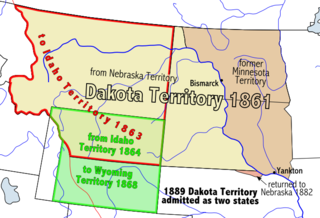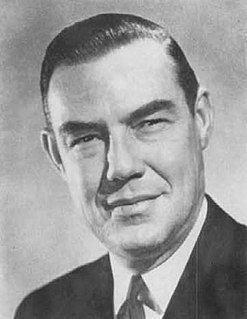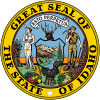It has been requested that the title of this article be changed to List of governors of Idaho . Please see the relevant discussion on the discussion page. The page should not be moved unless the discussion is closed; summarizing the consensus achieved in support of the move. |
| Governor of Idaho | |
|---|---|
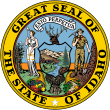 | |
| Residence | None |
| Term length | Four years, no term limit |
| Inaugural holder | George L. Shoup |
| Formation | October 1, 1890 |
| Deputy | Janice McGeachin |
| Salary | $117,000 (2013) [1] |
| Website | gov.idaho.gov |
The Governor of Idaho is the head of the executive branch of Idaho's state government [2] and commander-in-chief of the state's military forces. [3] The governor has the duty to see state laws are executed, power to either approve or veto bills passed by the Idaho Legislature. [3]

A commander-in-chief, sometimes also called supreme commander, is the person that exercises supreme command and control over an armed forces or a military branch. As a technical term, it refers to military competencies that reside in a country's executive leadership – a head of state or a head of government.

In the United States, a state is a constituent political entity, of which there are currently 50. Bound together in a political union, each state holds governmental jurisdiction over a separate and defined geographic territory and shares its sovereignty with the federal government. Due to this shared sovereignty, Americans are citizens both of the federal republic and of the state in which they reside. State citizenship and residency are flexible, and no government approval is required to move between states, except for persons restricted by certain types of court orders. Four states use the term commonwealth rather than state in their full official names.

The Idaho Legislature consists of the upper Idaho Senate and the lower Idaho House of Representatives. Idaho is divided into 35 legislative districts, which each elect one senator and two representatives. There are no term limits for either chamber.
Contents
- Governors
- Governors of the Territory of Idaho
- Governors of the State of Idaho
- See also
- Notes
- References
- External links
Idaho Territory had 16 territorial governors appointed by the President of the United States from the territory's organization in 1863 until the formation of the state of Idaho in 1890. Four of these never took office, resigning before reaching the territory.

The Territory of Idaho was an organized incorporated territory of the United States that existed from March 3, 1863, until July 3, 1890, when the final extent of the territory was admitted to the Union as Idaho.

The president of the United States (POTUS) is the head of state and head of government of the United States of America. The president directs the executive branch of the federal government and is the commander-in-chief of the United States Armed Forces.
Thirty-one individuals have held the office of governor of Idaho since the state's admission to the Union in 1890, two of whom—C. A. Bottolfsen and Cecil Andrus—served non-consecutive terms. The state's first governor, George L. Shoup, had the shortest term of three months, and Cecil Andrus served as governor the longest at 14 years. Four governors resigned, but none have died while in office. The current governor is Republican Brad Little, who took office on January 7, 2019.

The United States of America (USA), commonly known as the United States or America, is a country comprising 50 states, a federal district, five major self-governing territories, and various possessions. At 3.8 million square miles, the United States is the world's third or fourth largest country by total area and is slightly smaller than the entire continent of Europe's 3.9 million square miles. With a population of over 327 million people, the U.S. is the third most populous country. The capital is Washington, D.C., and the largest city by population is New York City. Forty-eight states and the capital's federal district are contiguous in North America between Canada and Mexico. The State of Alaska is in the northwest corner of North America, bordered by Canada to the east and across the Bering Strait from Russia to the west. The State of Hawaii is an archipelago in the mid-Pacific Ocean. The U.S. territories are scattered about the Pacific Ocean and the Caribbean Sea, stretching across nine official time zones. The extremely diverse geography, climate, and wildlife of the United States make it one of the world's 17 megadiverse countries.

Clarence Alfred Bottolfsen was a politician from Idaho, a member of the Idaho Republican Party. He served as the 17th and 19th Governor of Idaho, from 1939 to 1941 and again from 1943 to 1945.
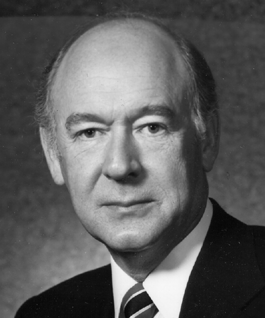
Cecil Dale Andrus was an American politician who served fourteen years as the Governor of Idaho. A Democrat, he also served as U.S. Secretary of the Interior from 1977 to 1981 during the Carter Administration. Andrus lost his first gubernatorial election in 1966, but won four and his 14 years as governor is the most in state history. Through 2019, he is the most recent Democrat to have held the office.

